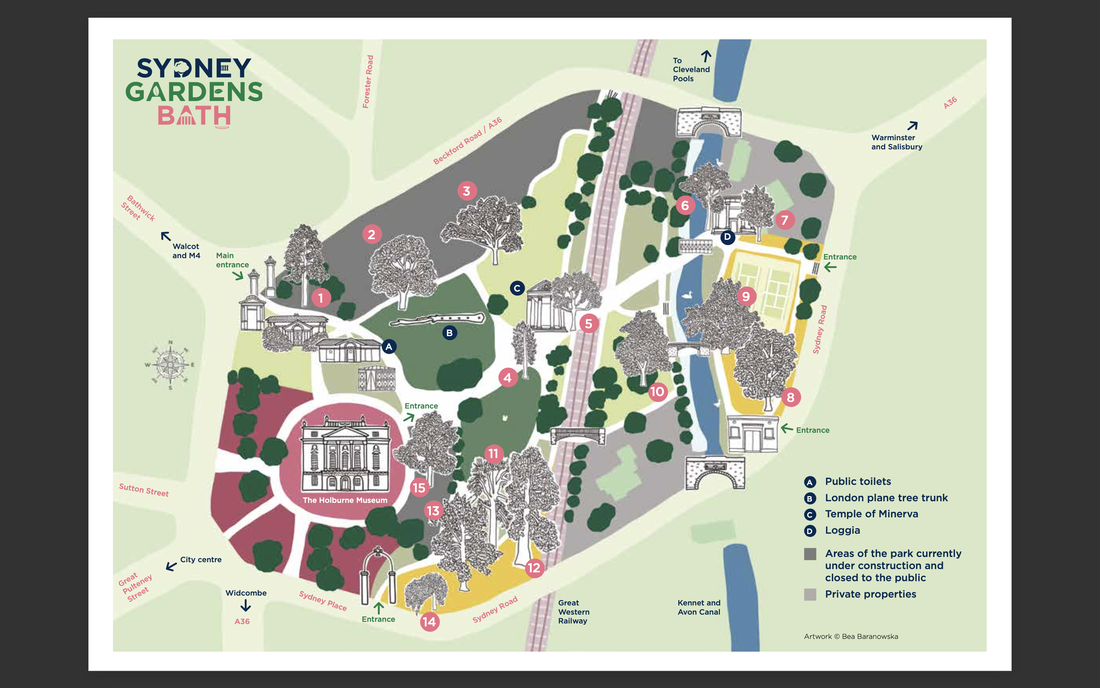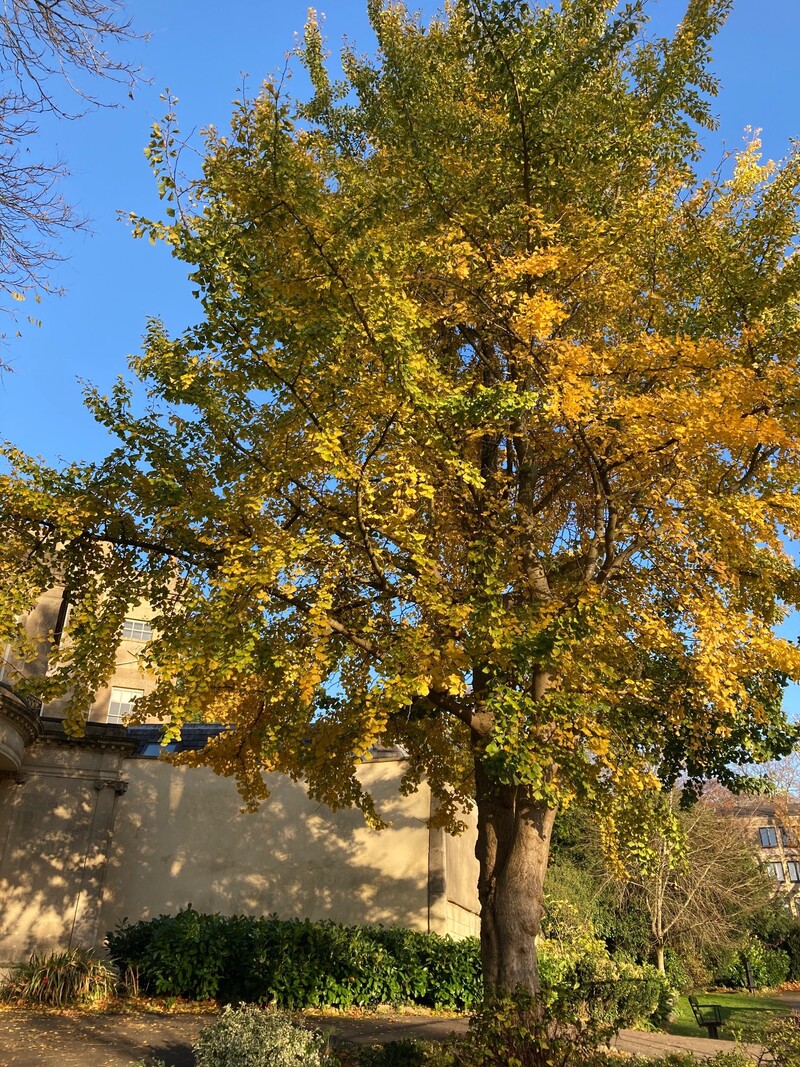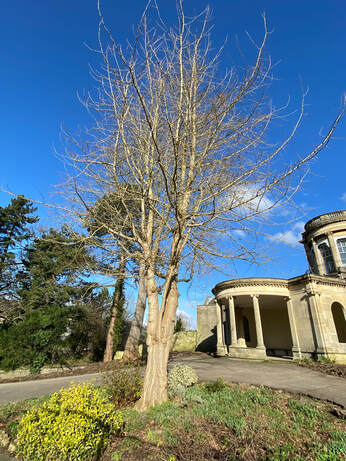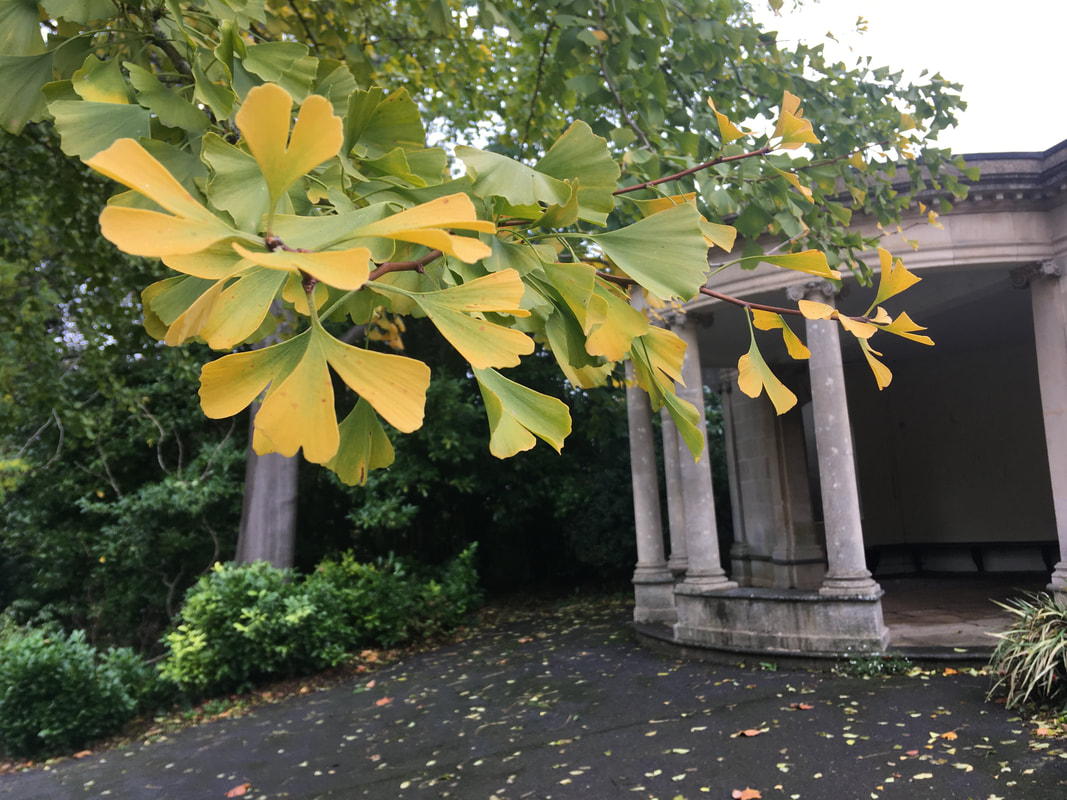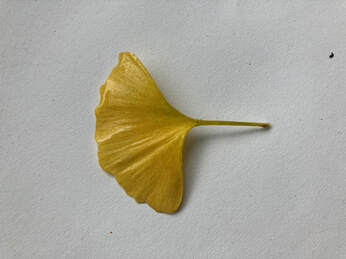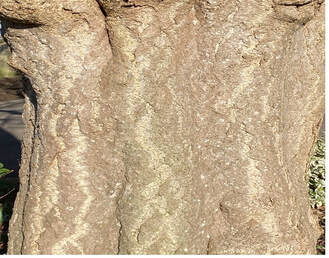Having taken the central promenade up through the gardens, over the railway and canal, you will find the Ginkgo biloba; common name, the Maidenhair tree, standing proud, beside the Loggia.
Maidenhair Tree is the English name given to this Chinese tree, but its official name Ginkgo biloba is commonly used. The name Ginkgo is thought to derive from a Chinese word ‘yinxing’ meaning ‘silver apricot’, the seed of the Ginkgo used to be regarded as a precious fruit in China.
The Ginkgo is the only surviving member of a family of trees which were common in Jurassic times: 350 million years ago, it is a living fossil and is not closely related to any other tree. The Ginkgo tree is highly respected in China, where trees are recorded over 3,000 years old; six Ginkgo trees that survived the Hiroshima nuclear bomb blast are still alive today.
Leaves of the Gingko have been found in the fossil record on every continent. Although it is listed as endangered in the wild, the Ginkgo tree is still cultivated in China to supply leaves for herbal medicine. The first Ginkgo seeds cultivated in Europe were at the Utrecht Botanical Gardens in the 1730’s, the tree arrived in England around the 1750s.
The Ginkgo tree in Sydney Gardens stands in its own flower bed beside the Loggia. The bark of the Ginkgo, with age develops fishers and scales, which are sometimes snake like in appearance. Ginkgo is dioecious, meaning male and female flowers are borne on separate trees. The flowers are yellow and pendulous in form; female up to 4cm and male up to 8cm in length.
The Ginkgo can reach heights of 25-50m and is common in parks and gardens in the UK. The Ginkgo is also deciduous meaning it loses its leaves in the autumn. The leaf is a distinctive fan shape which is divided into two lobes. On average the leaves are 5-10cm but can grow up to 15cm across. In the spring the leaves open pale green in colour and in the Autumn, they turn a brilliant saffron yellow.
The female tree begins to produce fruit, which is a fleshy, brownish orange in colour and about the size of a cherry, from around the age of 20 years. In the autumn, as the fallen fruit, which contains butyric acid, begins to decompose it gives off a strong smell of rancid butter. Because of this unpleasant smell parks and gardens often choose a male specimen tree for ornamental display.
The Ginkgo can reach heights of 25-50m and is common in parks and gardens in the UK. The Ginkgo is also deciduous meaning it loses its leaves in the autumn. The leaf is a distinctive fan shape which is divided into two lobes. On average the leaves are 5-10cm but can grow up to 15cm across. In the spring the leaves open pale green in colour and in the Autumn, they turn a brilliant saffron yellow.
The female tree begins to produce fruit, which is a fleshy, brownish orange in colour and about the size of a cherry, from around the age of 20 years. In the autumn, as the fallen fruit, which contains butyric acid, begins to decompose it gives off a strong smell of rancid butter. Because of this unpleasant smell parks and gardens often choose a male specimen tree for ornamental display.
Reference
Gazzard, G. A. MSc (2021) wrote the above article with information from the following sources.
Rose, B. BSc (Hons) MSc DipArb(RFS) MICFor RCArborA Chartered Arboriculturist Arboricultural Association Registered Consultant (2020). Bosky Trees, Arboricultural Impact Assessment & Tree Protection Plan for trees at Sydney Gardens, Bath. (Accessed 13/03/21).
White, R. S. PhD (2020). Sydney Gardens: a self-guided walking tour reflecting on botany, empire, reluctant heritage and deep time. (Accessed 13/03/13). Available at:
https://medium.com/sydney-gardens-bath/sydney-gardens-a-reluctant-heritage-a-walking-tour-reflecting-on-botany-empire-and-deep-time-789d71c0c288
Wikipedia: Ginkgo biloba. (Accessed 13/03/13). Available at:
https://en.wikipedia.org/wiki/Ginkgo_biloba
Hillier: Ginkgo biloba. (Accessed 13/03/13). Available at:
https://www.hillier.co.uk/trees/listings/ginkgo-biloba/
Avis-Riordan, K. (2020). Ginkgo biloba, the tree that outlived the dinosaurs. (Accessed 13/03/13). Available at:
https://www.kew.org/read-and-watch/ginkgo-biloba-maidenhair-tree-kew-gardens
